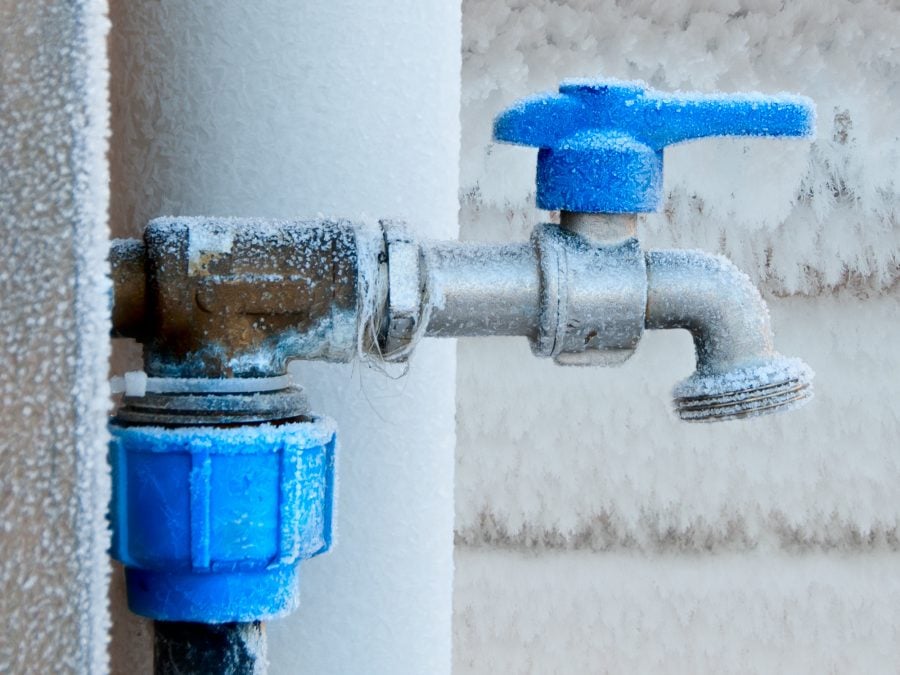We've unearthed this post about Prevent Frozen Pipes listed below on the internet and felt it made good sense to discuss it with you over here.

Winter can wreak havoc on your pipes, particularly by freezing pipes. Here's just how to stop it from taking place and what to do if it does.
Introduction
As temperatures decline, the risk of icy pipes boosts, possibly leading to expensive fixings and water damage. Understanding how to prevent icy pipelines is important for house owners in cold climates.
Prevention Tips
Shielding prone pipelines
Cover pipelines in insulation sleeves or utilize warm tape to safeguard them from freezing temperature levels. Focus on pipes in unheated or outside locations of the home.
Heating strategies
Maintain indoor areas sufficiently heated up, particularly areas with pipes. Open cupboard doors to permit cozy air to distribute around pipelines under sinks.
Just how to determine icy pipelines
Look for lowered water flow from faucets, uncommon smells or noises from pipes, and noticeable frost on exposed pipes.
Long-Term Solutions
Structural changes
Think about rerouting pipes away from outside wall surfaces or unheated locations. Include extra insulation to attic rooms, basements, and crawl spaces.
Updating insulation
Buy high-quality insulation for pipelines, attic rooms, and wall surfaces. Correct insulation aids maintain consistent temperatures and minimizes the risk of frozen pipes.
Protecting Outdoor Pipes
Garden hoses and exterior faucets
Separate and drain yard pipes before winter months. Install frost-proof faucets or cover outside faucets with shielded caps.
Recognizing Icy Pipes
What creates pipes to ice up?
Pipes freeze when subjected to temperatures below 32 ° F (0 ° C) for extended periods. As water inside the pipelines freezes, it increases, taxing the pipeline wall surfaces and possibly triggering them to burst.
Dangers and problems
Icy pipelines can bring about water disruptions, building damages, and pricey repairs. Ruptured pipelines can flooding homes and create considerable architectural damage.
Signs of Frozen Pipes
Recognizing icy pipes early can prevent them from bursting.
What to Do If Your Pipelines Freeze
Immediate actions to take
If you think icy pipelines, maintain faucets available to ease stress as the ice melts. Utilize a hairdryer or towels soaked in warm water to thaw pipes slowly.
Verdict
Stopping icy pipelines requires aggressive procedures and fast reactions. By understanding the reasons, signs, and preventive measures, house owners can secure their pipes throughout winter.
5 Ways to Prevent Frozen Pipes
Drain Outdoor Faucets and Disconnect Hoses
First, close the shut-off valve that controls the flow of water in the pipe to your outdoor faucet. Then, head outside to disconnect and drain your hose and open the outdoor faucet to allow the water to completely drain out of the line. Turn off the faucet when done. Finally, head back to the shut-off valve and drain the remaining water inside the pipe into a bucket or container. Additionally, if you have a home irrigation system, you should consider hiring an expert to clear the system of water each year.
Insulate Pipes
One of the best and most cost-effective methods for preventing frozen water pipes is to wrap your pipes with insulation. This is especially important for areas in your home that aren’t exposed to heat, such as an attic. We suggest using foam sleeves, which can typically be found at your local hardware store.
Keep Heat Running at 65
Your pipes are located inside your walls, and the temperature there is much colder than the rest of the house. To prevent your pipes from freezing, The Insurance Information Institute suggests that you keep your home heated to at least 65 degrees, even when traveling. You may want to invest in smart devices that can keep an eye on the temperature in your home while you’re away.
Leave Water Dripping
Moving water — even a small trickle — can prevent ice from forming inside your pipes. When freezing temps are imminent, start a drip of water from all faucets that serve exposed pipes. Leaving a few faucets running will also help relieve pressure inside the pipes and help prevent a rupture if the water inside freezes.
Open Cupboard Doors
Warm your kitchen and bathroom pipes by opening cupboards and vanities. You should also leave your interior doors ajar to help warm air circulate evenly throughout your home.

Hopefully you enjoyed our post on How To Avoid Freezing Pipes. Many thanks for finding the time to browse our piece of content. Sharing is caring. One never knows, you will be helping someone out. Thanks a lot for taking the time to read it.
Call Today
Comments on “Protect Against Frozen Pipes in Winter: Pro Tips”